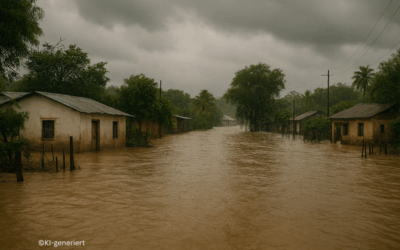The DKKV is…
German Committee for Disaster Reduction e.V. (ger.: Deutsches Komitee Katastrophenvorsorge e.V.)
Newsblog
Flood and Landslides in Mexiko
In Mexico, heavy rainfall has caused flooding and landslides, affecting a total of 80,000 people [1]. The death toll is estimated at 64, with several people still missing. Around 260 communities were cut off from the outside world, and approximately ten thousand...
AHEAD Project Meeting in Paris: Progress and Next Steps
On October 17, 2025, the AHEAD project partners met at AFPCNT’s premises in Paris for a productive meeting. The event kicked off with a networking dinner on October 16, providing an opportunity for informal exchange. Hosts Frédéric Tatout and Christian Despres...
DKKv participated in the Krisenfit-Workshop at tge Unisversity of Wuppertal
The DKKV participated in the Krisenfit-Workshop at the University of Wuppertal, which featured presentations and two workshops on process analysis using the BIA tool and on the development of training concepts in crisis management. Among the participants were...
DKKV visits the Joint Master’s Programme ‘Geography of Environmental Risks and Human Security’
The DKKV introduced itself to the new students of the international Joint Master’s Programme “Geography of Environmental Risks and Human Security”, which is jointly organized by the Department of Geography at the University of Bonn (GIUB) and the United Nations...
Follow us




What is disaster risk reduction?
Storms, natural hazards and extreme events can quickly become a danger to people and the environment. But climate change, extreme urbanization, power outages and fires also offer potential hazards.
A disaster occurs when the functioning of a community or society is impaired or interrupted and, as a result, high human, material, economic and ecological losses occur that cannot be managed alone.
Precautionary measures can help to reduce the consequences and impact of the disaster. Depending on the hazard and personal circumstances, the precautionary measures to be taken may vary.
Find out more about potential hazards and individual precautionary measures on our topic pages.






